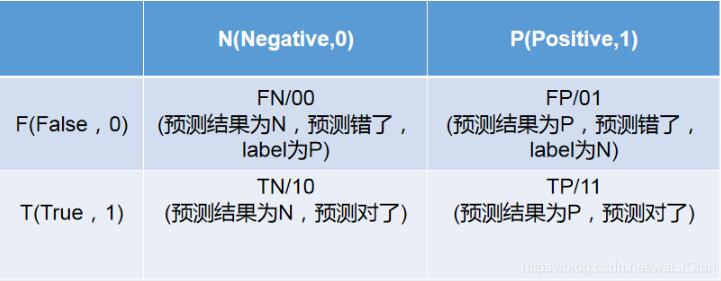在React中this容易遇到的問題詳解
目錄
- 1.為什么父組件給子組件傳遞函數(shù)時(shí),必須綁定 this?
- a.為什么在子組件中調(diào)用回調(diào)函數(shù)時(shí),this 的默認(rèn)值會是 undefined
- 2.react 中的組件四種綁定 this 方法
- 3.箭頭函數(shù)+回調(diào) 在定義時(shí)就綁定this
1.為什么父組件給子組件傳遞函數(shù)時(shí),必須綁定 this?
當(dāng)父組件將一個(gè)方法作為回調(diào)函數(shù)傳遞給子組件時(shí),需要綁定 this 是因?yàn)楹瘮?shù)的 this 值在 JavaScript 中是在調(diào)用時(shí)確定的,而不是在聲明時(shí)確定的。在子組件中調(diào)用這個(gè)回調(diào)函數(shù)時(shí),this 的默認(rèn)值會是 undefined(在嚴(yán)格模式下)或全局對象(在非嚴(yán)格模式下),而不是父組件的實(shí)例。這通常會導(dǎo)致意外的行為和錯(cuò)誤。
為了確保回調(diào)函數(shù)在子組件中執(zhí)行時(shí),其 this 值仍然指向父組件的實(shí)例,我們需要使用 bind 方法將 this 明確綁定到父組件實(shí)例。這樣,無論回調(diào)函數(shù)在哪里被調(diào)用,其 this 值始終保持一致。
以下是一個(gè)簡單的例子:
class Parent extends React.Component {
constructor(props) {
super(props);
this.state = {
value: "Hello",
};
this.handleClick = this.handleClick.bind(this); // 綁定 this
}
handleClick() {
console.log(this.state.value); // 輸出 "Hello"
}
render() {
return <Child onClick={this.handleClick} />;
}
}
class Child extends React.Component {
render() {
return <button onClick={this.props.onClick}>Click me</button>;
}
}
在這個(gè)例子中,我們在 Parent 組件的構(gòu)造函數(shù)中使用 bind 方法將 this.handleClick 的 this 值綁定到 Parent 組件實(shí)例。這樣,無論 handleClick 在哪里被調(diào)用,其 this 值始終指向 Parent 組件實(shí)例。因此,當(dāng)在子組件中點(diǎn)擊按鈕時(shí),handleClick 函數(shù)能夠正確地訪問 Parent 組件的 state。
如果您不想在構(gòu)造函數(shù)中使用 bind,還可以使用箭頭函數(shù)來自動綁定 this:
class Parent extends React.Component {
state = {
value: "Hello",
};
handleClick = () => {
console.log(this.state.value); // 輸出 "Hello"
};
render() {
return <Child onClick={this.handleClick} />;
}
}
在這個(gè)例子中,我們使用了類屬性(Class Field)語法并將 handleClick 定義為箭頭函數(shù)。箭頭函數(shù)會自動綁定其定義時(shí)的上下文,所以不再需要手動綁定 this。
a.為什么在子組件中調(diào)用回調(diào)函數(shù)時(shí),this 的默認(rèn)值會是 undefined
首先,我們需要了解 JavaScript 函數(shù)中的 this 是如何工作的。在 JavaScript 中,函數(shù)的 this 值取決于函數(shù)是如何被調(diào)用的。這里有幾種情況:
- 當(dāng)作為對象的方法調(diào)用時(shí),
this指向該對象。
const obj = {
value: "Hello",
method() {
console.log(this.value);
},
};
obj.method(); // 輸出 "Hello",此時(shí) this 指向 obj
- 當(dāng)作為一個(gè)普通函數(shù)調(diào)用時(shí),
this指向全局對象(非嚴(yán)格模式下)或undefined(嚴(yán)格模式下)。
function example() {
console.log(this);
}
example(); // 非嚴(yán)格模式下輸出全局對象,嚴(yán)格模式下輸出 undefined
- 當(dāng)使用箭頭函數(shù)時(shí),
this會捕獲定義時(shí)的上下文。
const obj = {
value: "Hello",
method: () => {
console.log(this.value);
},
};
obj.method(); // 輸出 undefined,因?yàn)榧^函數(shù)捕獲了全局上下文
現(xiàn)在我們回到 React 的子組件中調(diào)用父組件傳遞的回調(diào)函數(shù)的問題。當(dāng)在子組件中調(diào)用回調(diào)函數(shù)時(shí),它實(shí)際上是在一個(gè)事件處理程序(如 onClick)中作為普通函數(shù)調(diào)用的。這意味著它不會綁定到子組件實(shí)例,而是綁定到全局對象(非嚴(yán)格模式下)或 undefined(嚴(yán)格模式下)。
要解決這個(gè)問題,我們需要確保回調(diào)函數(shù)中的 this 在調(diào)用時(shí)始終指向父組件實(shí)例。這就是為什么我們需要在父組件中使用 bind 方法或箭頭函數(shù)來綁定 this 的原因。通過這樣做,我們可以確保回調(diào)函數(shù)在子組件中調(diào)用時(shí),其 this 值始終指向父組件實(shí)例。
2.react 中的組件四種綁定 this 方法
使用箭頭函數(shù)可以在定義的時(shí)候就綁定事件 。
而不再是調(diào)用時(shí)決定this指向。
在 React 中,有四種常見的方法來綁定組件方法中的 this:
- 構(gòu)造函數(shù)中綁定:在組件的構(gòu)造函數(shù)中顯式地為方法綁定
this。這是比較傳統(tǒng)的方式。
class MyComponent extends React.Component {
constructor(props) {
super(props);
this.state = { ... };
this.handleClick = this.handleClick.bind(this);
}
handleClick() {
// ...
}
render() {
return <button onClick={this.handleClick}>Click me</button>;
}
}
- 箭頭函數(shù)作為類屬性:使用類屬性(class properties)語法,將組件方法定義為箭頭函數(shù)。這樣,
this會自動綁定到當(dāng)前組件實(shí)例。
class MyComponent extends React.Component {
state = { ... };
handleClick = () => {
// ...
};
render() {
return <button onClick={this.handleClick}>Click me</button>;
}
}
- 箭頭函數(shù)作為回調(diào):在 JSX 中直接使用箭頭函數(shù),這樣也可以保證
this被正確綁定。但請注意,每次組件渲染時(shí),都會創(chuàng)建一個(gè)新的箭頭函數(shù),可能會導(dǎo)致性能問題。
class MyComponent extends React.Component {
state = { ... };
handleClick() {
// ...
}
render() {
return <button onClick={() => this.handleClick()}>Click me</button>;
}
}
- 使用
Function.prototype.bind()方法作為回調(diào):在 JSX 中直接使用Function.prototype.bind()方法來為回調(diào)函數(shù)綁定this。同樣,這種方式也會在每次渲染時(shí)創(chuàng)建一個(gè)新的函數(shù),可能會導(dǎo)致性能問題。
class MyComponent extends React.Component {
state = { ... };
handleClick() {
// ...
}
render() {
return <button onClick={this.handleClick.bind(this)}>Click me</button>;
}
}
推薦使用構(gòu)造函數(shù)綁定或箭頭函數(shù)作為類屬性的方法,因?yàn)樗鼈冊诮M件實(shí)例創(chuàng)建時(shí)只綁定一次,不會在每次渲染時(shí)創(chuàng)建新的函數(shù)。
3.箭頭函數(shù)+回調(diào) 在定義時(shí)就綁定this
這里使用箭頭函數(shù)作為回調(diào)函數(shù)的原因是為了確保setCount函數(shù)在點(diǎn)擊按鈕時(shí)正確地執(zhí)行。箭頭函數(shù)可以自動綁定this,使得this值在定義時(shí)就已經(jīng)確定。
如果你直接寫成這樣:
<button onClick={setCount(count + 1)}>Increment</button>
這會導(dǎo)致一個(gè)問題:在組件渲染時(shí),setCount(count + 1)就會被立即執(zhí)行,而不是等到用戶點(diǎn)擊按鈕時(shí)。這樣一來,按鈕點(diǎn)擊事件就沒有意義了,而且還可能導(dǎo)致無限循環(huán)的渲染。
而使用箭頭函數(shù)作為回調(diào):
<button onClick={() => setCount(count + 1)}>Increment</button>
這樣,當(dāng)用戶點(diǎn)擊按鈕時(shí),箭頭函數(shù)會被執(zhí)行,而setCount會在箭頭函數(shù)內(nèi)部被調(diào)用,實(shí)現(xiàn)了正確的點(diǎn)擊事件處理。
總之,使用箭頭函數(shù)可以確保setCount在點(diǎn)擊事件觸發(fā)時(shí)被調(diào)用,而不是在組件渲染時(shí)就執(zhí)行。
以上就是在React中this容易遇到的問題詳解的詳細(xì)內(nèi)容,更多關(guān)于React his的資料請關(guān)注其它相關(guān)文章!

 網(wǎng)公網(wǎng)安備
網(wǎng)公網(wǎng)安備